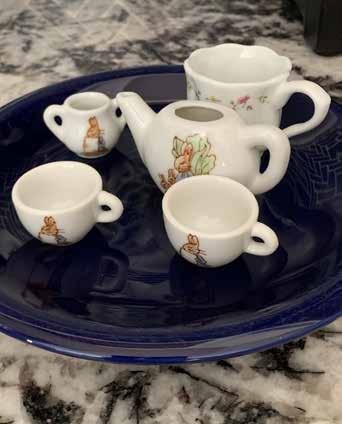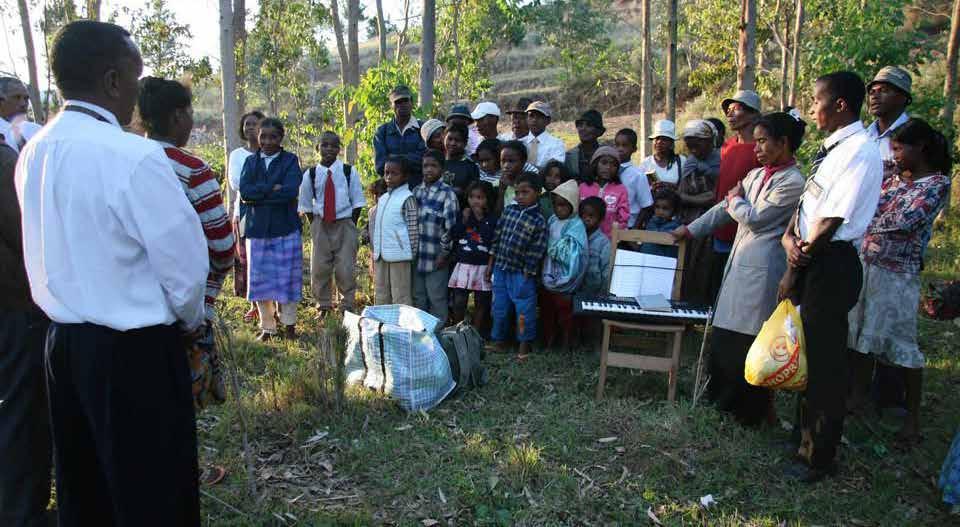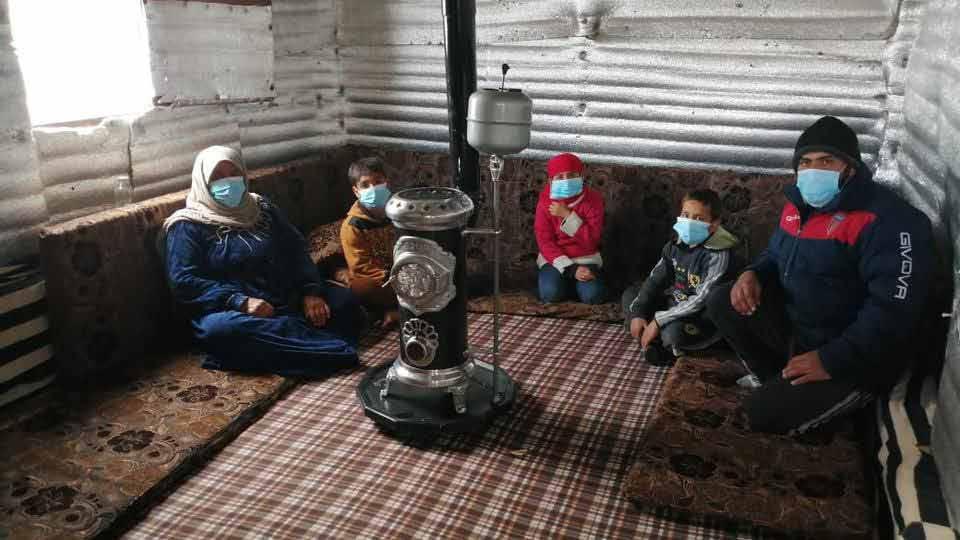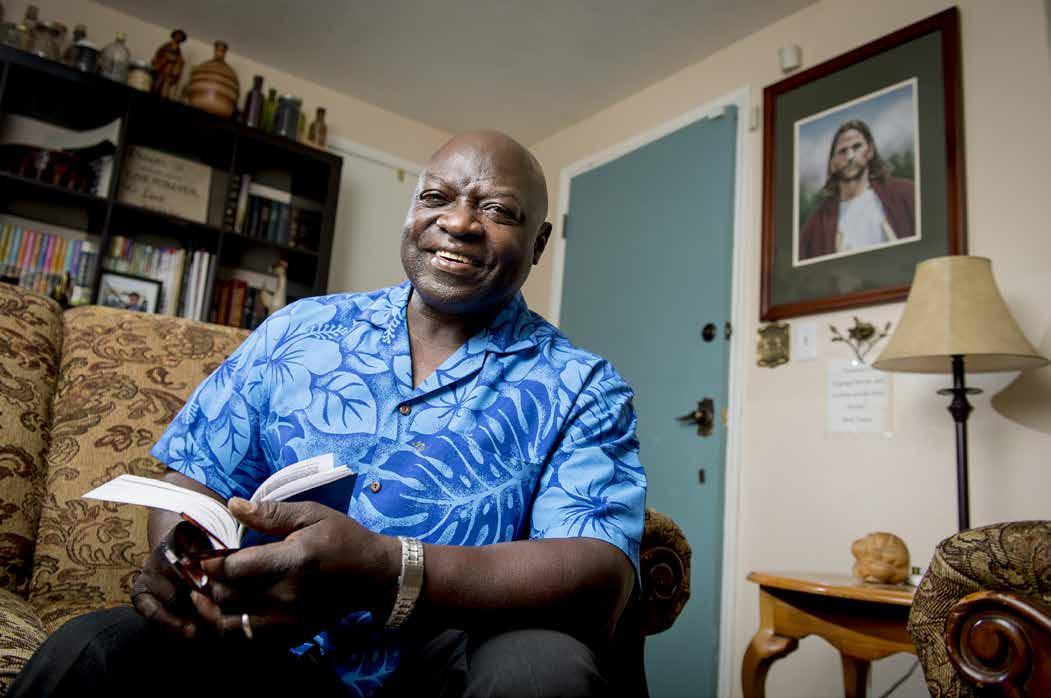
15 minute read
Global church, global pandemic
COURTESY INTELLECTUAL PROPERTIES The First Presidency of the LDS Church (Left to right) President Dallin H. Oaks, first counselor, President Russell M. Nelson, President Henry B. Eyring, second counselor, wear face masks as they listen to Emiline Twitchell, a conservator at the Church History Library talk about items placed in the Salt Lake Temple time capsule.
GLOBAL
The Church News.
Virtual conferences
In normal years, teenagers within the church regularly gather for weekly activities. Many also attend regional summer conferences where they learn doctrine while socializing with others of their faith. But during COVID-19, those activities became virtual.
Youth from all over the world participated in a unique virtual music festival in July. According to the Church Newsroom, the virtual broadcast “included youth representing more than 20 countries, including: Brazil, the Dominican Republic, Germany, Ghana, Italy, Japan, New Zealand, Peru, the Philippines, Tonga, the United Kingdom and the United States.”
The women of the church also participated in a virtual conference of their own. BYU Women’s Conference, which normally is held at Brigham Young University, and draws tens of thousands of women, was held completely online in May.
The conference was held digitally and was free to stream, featuring pre-recorded talks from conference organizers, leaders from the church and other speakers.
BYU Education Week, another conference that draws thousands of men and women, and usually held in August, was rescheduled. According to information from organizers, this year’s conference, originally planned for Aug. 17-21, will be an online conference that members can view starting Oct. 7.
Temple worship
During the spring, temples all over the world closed. Workers and patrons attending the temple often work in close proximity to each other. And many of the workers are of retirement age — a demographic affected in higher rates by COVID-19.
By summer, though, church leaders started opening temples through a phased approach. Some are currently in Phase 1, where only living marriage sealings are done for husbands and wives. Others are in Phase 2, where all temple ordinances for living individuals can be completed. Some are still fully closed.
Church worship
For the past six months, church members around the world have worshiped at home. In many areas, members had special permission from their local bishops to administer the sacrament, symbolizing the death and resurrection of Jesus Christ, within their own homes with priesthood authority.
Earlier this summer, the church presidency announced that members could start a phased return to church meetings, where allowed by local government regulations, and under the direction of local church leaders.
Utah wards participating in this return to meetings are doing so cautiously. Most ward bishoprics set specific Sundays and staggered times for sacrament meeting, so only some of the congregation attends at a time. Most encourage members to wear masks and socially distance while in the building.
Church leadership has not yet announced when wards will return to full meetings every Sunday.
But because of the church’s “Come Follow Me” curriculum, many families have been able to continue their worship and learning wherever they are.
BY GENELLE PUGMIRE
Daily Herald
With all the chaos and confusion in the world today, members of The Church of Jesus Christ of Latter-day Saints turn to their beliefs that their homes can be a refuge from the storm. The home should be second only to the temple as a respite, a place of love and learning, a holy place. That belief is helping families as they work through the COVID-19 pandemic of 2020.
Be prepared
President Russell M. Nelson, leader of the more than 16.5 million worldwide membership of the church, had been president only seven months when he announced a change for the church.
As part of ongoing efforts to help Latterday Saints “learn doctrine, fortify faith, and foster heartfelt worship,” Nelson announced the new adjustments would include a home-based, church-supported curriculum.
Nelson also announced that Sunday worship services would be two hours instead of three with the last hour being for at-home study.
The Come Follow Me at-home curriculum for all ages began Jan. 1, 2019.
“The new home-centered, Churchsupported integrated curriculum has the potential to unleash the power of families, as each family follows through conscientiously and carefully to transform their home into a sanctuary of faith,” Nelson said.
Little did church members or Nelson know that Come Follow Me, newly filmed Book of Mormon videos, the church’s online library, YouTube channel, Tabernacle at Temple Square channel and other support websites, would become a major source for at-home worship and study during a worldwide pandemic that would begin just one year later.
Church at home
“We had a whole year to practice before we had to do this,” said Ganel-Lyn Condie, author, motivational speaker and YouTube.com talk show host for “Real Talk.”
Condie, a member of the LDS Church, has interviewed a number of guests on the topic of at-home church.
“I love Come Follow Me,” Condie said. “It lets us talk about what’s really happen
COURTESY WILLIAM A. WILSON FOLKLORE ARCHIVES A home-made sacrament tray helps a single mom with three daughters focus on the meaning of the sacrament until a priesthood holder can come to their home to bless it.

ing in real life.”
Families have been able to do deeper study into the scriptures, ask important and relevant questions and feel comfortable doing so in their homes.
Condie noted that every family she has met is trying to do church their own way, the way that is best suited for them, but still focused on learning and coming closer to Christ.
Collecting the stories
As soon as leaders in the church saw what was happening to the people in Wuhan, China, a huge airlift of personal protective equipment (PPE) and other humanitarian supplies was sent. That was Jan. 29.
While leaders were thinking about supplies for Wuhan, they also were thinking about what could happen with the virus and started at-home preparation for the possibility of a worldwide pandemic. They knew life in the church would need to have several ongoing adjustments in the pandemic’s wake, according to the church newsroom information.
In a matter of a few weeks, changes and closures in the church were far reaching. From all temples being closed, to thousands of missionaries coming home and church offices to meeting houses being closed, members began implementing a total home-based and church-supported program in crash-course fashion.
Since March 12, when church attendance was halted, Christine Blythe has been gathering stories of at-home church experiences from people around the globe.
Blythe, a folklore archives specialist of the William A. Wilson Folklore Archives in the L. Tom Perry Special Collections at Brigham Young University, shares a few of the more than 350 experiences she has received so far.
“Largely people have really loved home church,” Blythe said. “It makes the sacrament (communion) a more personal experience.”
Most people follow a laid-out pattern for worship that includes a song, prayer, thought/talk on a gospel topic and a lesson from Come Follow Me or past General Conference talks.
From what Blythe has received and what Condie has heard, the most important part of at-home church is the time set aside for the sacrament.
The focal point
The sacrament (communion) is the focal point of all LDS Church Sunday worship services. It is a time of renewal, of devotion and meditation as members recall their baptismal covenants (promises to God) and belief in the death, resurrection and atonement of Jesus Christ, according to church teachings.
The LDS Church uses bread and water to represent the body and blood of Christ during the sacrament portion of worship services each week.
That has not always been the case. Unusual circumstances have sometimes called for unusual methods of worship. Following the devastation of Germany and other Eastern European countries from World War II, even potato peelings were used by members of the church to represent the body of Christ, according to LDS Church history.
Today, people who have dietary concerns, are welcome to bring to church a cracker or whatever they need to represent these special emblems to be blessed.
The stories are inspiring and in some cases humorous, according to Blythe. She also has received stories from those not of the LDS Church but from groups that have their origins in The Church of Jesus Christ of Latter-day Saints.
Blythe notes she is also seeking and collecting stories from churches all over the world that are holding online church, from Lutheran to Presbyterian, Independent Christian congregations to Jewish Synagogues, being at home hasn’t changed the desire to worship.
One Seventh-day Adventist Pastor, Dan Martella, who used to pastor to the Provo congregation, said he has had an interesting time of it. He noted he had never been trained in Seminary to do Zoom worship services during a pandemic. He is learning a whole new way to reach out to his congregation.
Bringing the spirit of the Lord through the computer screen often demands a bit more creativity than in-person services, according to Blythe.
“With in-home church there is more creativity happening,” Blythe said.
In the case of in-home sacrament, church members are going out of their comfort zone to accommodate a need. In some cases, those accommodations would never touch the sacrament table at church.
“Latter-day Saints are purchasing sets of shot glasses,” Blythe said. “Lots of them.”
For a church that doesn’t drink alcohol, the shot glasses are becoming vessels holding water symbolizing Christ’s blood that was shed for them, according to Blythe.
Members of the church have reported using red solo cups (without the beer), doll tea services, bathroom-sized paper cups and just regular glasses out of the cupboard for the sacrament, according to Blythe.
For the emblems of Christ’s body people have reported using everything from ba
guettes to Ritz crackers.
One family said they prepare for Sunday sacrament by baking a special loaf of bread every Saturday, according to Blythe.
The stories
While hundreds of stories have been shared, many stories are so personal people have asked not to share their names, according to Blythe.
Blythe noted that some members are reporting that women and children are playing a bigger role in the sacrament at home, which they would not do at church.
While women are an essential part of the priesthood, only worthy males in the LDS Church are allowed to receive or be ordained to the priesthood.
At in-person church the responsibilities of preparing the sacrament trays and the table clothes are left to the Aaronic Priesthood, typically boys from age 11 to 15. Priests in the Aaronic Priesthood, boys ages 15 to 18 may bless the sacrament.
Blythe notes that is different as families worship in their homes. Women and children are often preparing and setting the place where the sacrament is blessed, while the prayers are offered by priesthood holders in the home.
Single women, in most areas, are able to have priesthood holders come to their homes. Blythe noted in a few of her stories, women have prepared the bread and water and men have offered the sacrament prayers at their front doors. They wear masks and sanitize their hands. If members are unable to partake of the sacrament they are invited to read the prayers and have a moment of silence to remember Christ and their relationship with him.
Blythe noted the early Latter-day Saints were all about the family. It was the core institution. Some of her collections have stories referencing the importance of gathering in the home. Having church at home feels like going back to a more simple way of life, where family members connect with one another, to what is really important.
“We often get into a Sunday slump,” Blythe said. “Dragging kids to church, putting the roast in the oven. This time (of athome church) has caused us to pause and
DOURTESY WILLIAM A. WILSON FOLKLORE ARCHIVES Children’s tea seat is being used by one family with little girls for the sacrament cups during at-home church service.

bring Christ into our homes.”
Lizzie’s challenge
“With me as a single mother, with no priesthood holder in the family, it has been a challenge because we haven’t had the sacrament [as often],” says Lizzie Mohodisa of South Africa, in an LDS newsroom press release. “But once in a while, our ministering brethren are able to come. It’s not every week as we have always been used to. But it is still a huge blessing.”
A single mom with three daughters from Pennsylvania waits for a time they can have the sacrament again. To bring the spirit of the sacrament into her home she made something her girls could focus on.
“We made a sacrament tray out of wood and a handle,” she said. “We bought plastic shot glasses at the dollar store. Because I am a single mom and have three daughters, we weren’t able to take the sacrament for three months. We made the tray and cloth looking forward to the time we could take it again.”
While this story is personal and sacred to this family, Blythe said others have seen the making of sacrament trays as a monetary opportunity.
“Many people are carving sacrament trays out of wood that are very ornate and are selling them,” Blythe said.
You can find them on Pinterest and Etsy and other social media platforms. Sellers are pushing the idea the trays are a memento of 2020.
Blythe shared this story from one man who had no bread.
“I prepare the sacrament by getting out a plate from the kitchen and putting the closest thing I have to bread on the plate,” he said. “A couple of weeks ago I used leftover pancakes. For water we just used glasses from the shelf and put enough water in just for one gulp.”
A young husband and his wife have three daughters ages 12, 6 and 1. Blythe noted they let the two oldest girls give talks to let them practice speaking for their church and then they have the sacrament.
“My husband blesses and passes the Sacrament on our sofa table (he looks at the prayers on his iPad),” the wife said. “We use the miniature china tea cups I have from my own childhood as our sacrament cups. My girls think it’s pretty fun to drink from them.”
She adds, “We have loved at-home church and it has added to the spirit of our home so much. We will never forget this special time.”
Others’ stories
Blythe has received in-home church stories from those of other faiths and particularly those who have broken away from The Church of Jesus Christ of Latter-day Saints. She shared two of them, but there are many more in her collection.
Community of Christ
The Community of Christ followed Joseph Smith III, the son of the Prophet Joseph Smith rather than Brigham Young. Followers believed that the succession should follow a Patriarchal, father to son, thread similar to the teachings of the Old Testament. They accept the Book of Mormon as scripture and certain portions of the Doctrine and Covenants, a book of LDS Church scripture that contains revelations to Joseph Smith and others. It is canonized scripture by the church membership.
“I am a Seventy in the Community of Christ and a Pastor of the Toronto congregation,” one man said in answering Blythe. “As of last fall the First Presidency (not to be confused with the First Presidency of The Church of Jesus Christ of Latter-day Saints), changed the guidelines of celebrating the sacrament of the Lord’s Supper to allow for simultaneous communion from multiple locations.”
He said the disciples (church members) are able to prepare the bread and wine/grape juice at their various locations. The prayers are said by priesthood members at one of the participating locations and all participants where they are will be able to partake.
“People are sometimes worried that doing sacred things in new ways trivializes or tarnishes the experience. We have found the opposite to be true,” the pastor said. “People around the world have felt the outpouring of the spirit when engaged in this Christian tradition.”
Bickertonites
The Bickertonites (sometimes called Rigdonites) are followers of William Bickerton and Sydney Rigdon — who broke away from the original church. The of ficial name of the church as registered in Pennsylvania where it is headquartered, is The Church of Jesus Christ.
After Joseph Smith died, Rigdon, who was first counselor in the First Presidency, believed he was the rightful successor and not Brigham Young, the president of the Quorum of the Twelve, according to Bickertonite history. They accept the King James version of the Bible and the Book of Mormon as scriptures.
One Bickertonite member from Michi gan writes, “We are having church service using Zoom. There is a sermon, music, testimony and prayer. Pre-COVID-19 we had communion every Sunday. Since ev eryone is at home and not all of our men are ordained elders, we can’t have physical bread and wine. During our services we take a moment to think about communion, what it means to us and the sacrifice of Jesus.”
She adds, “Our general church authorities haven’t specified how we should continue our worship service, so every branch/location is doing what is best for their group. We have other smaller branches join our Zoom meeting.”
She reports that several members in her congregation have had experiences (dreams, visions, tongues) that God is in the matter and the righteous need not fear.
Blythe noted that while many members of all churches are anxious to get back to church to worship with friends and commune with one another, there are just as many respondents, if not more, who say they will miss not having church at home.
Daily Herald reporter Genelle Pugmire can be contacted at gpugmire@heraldextra. com, (801) 344-2910, Twitter @gpugmire




